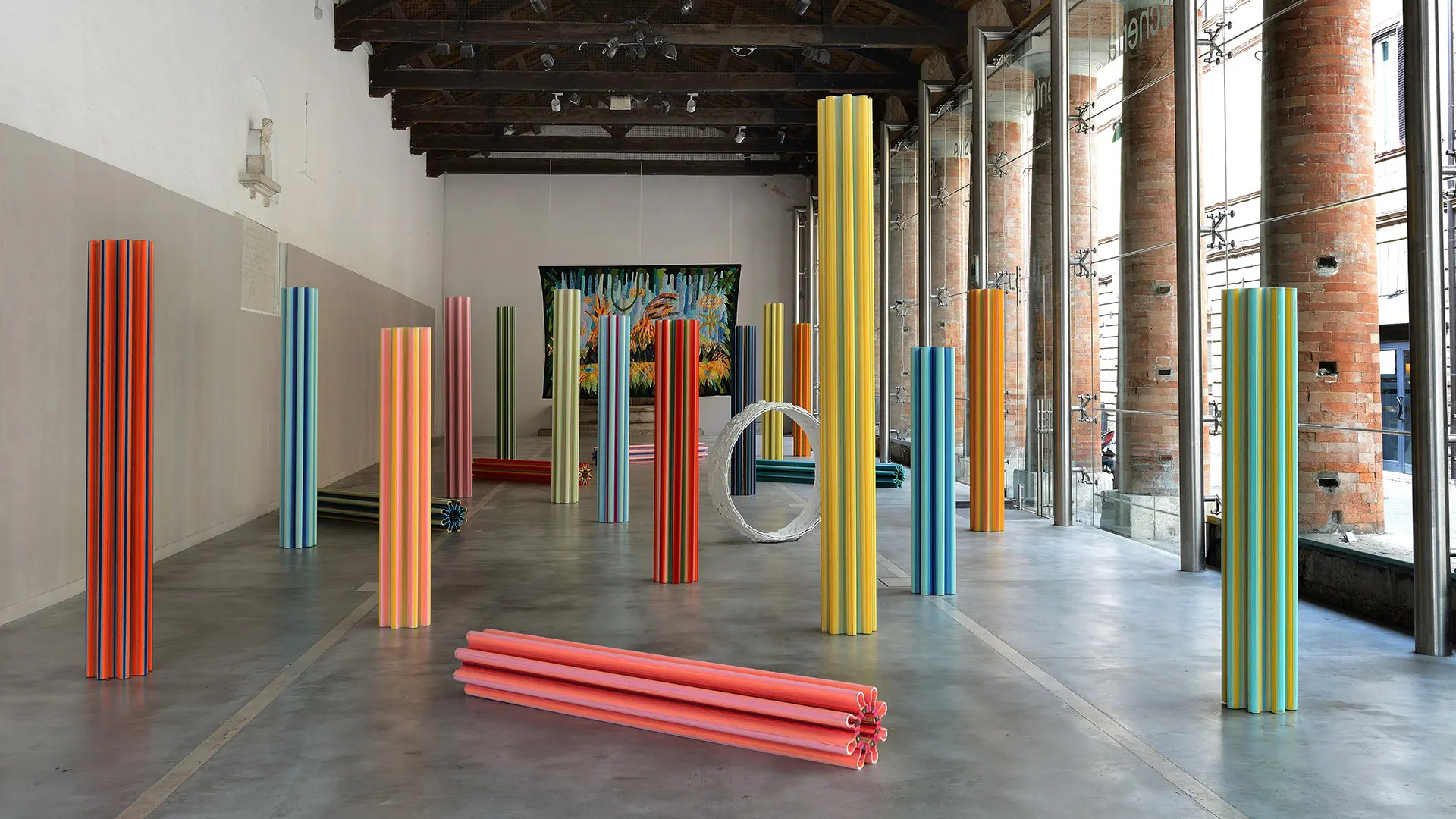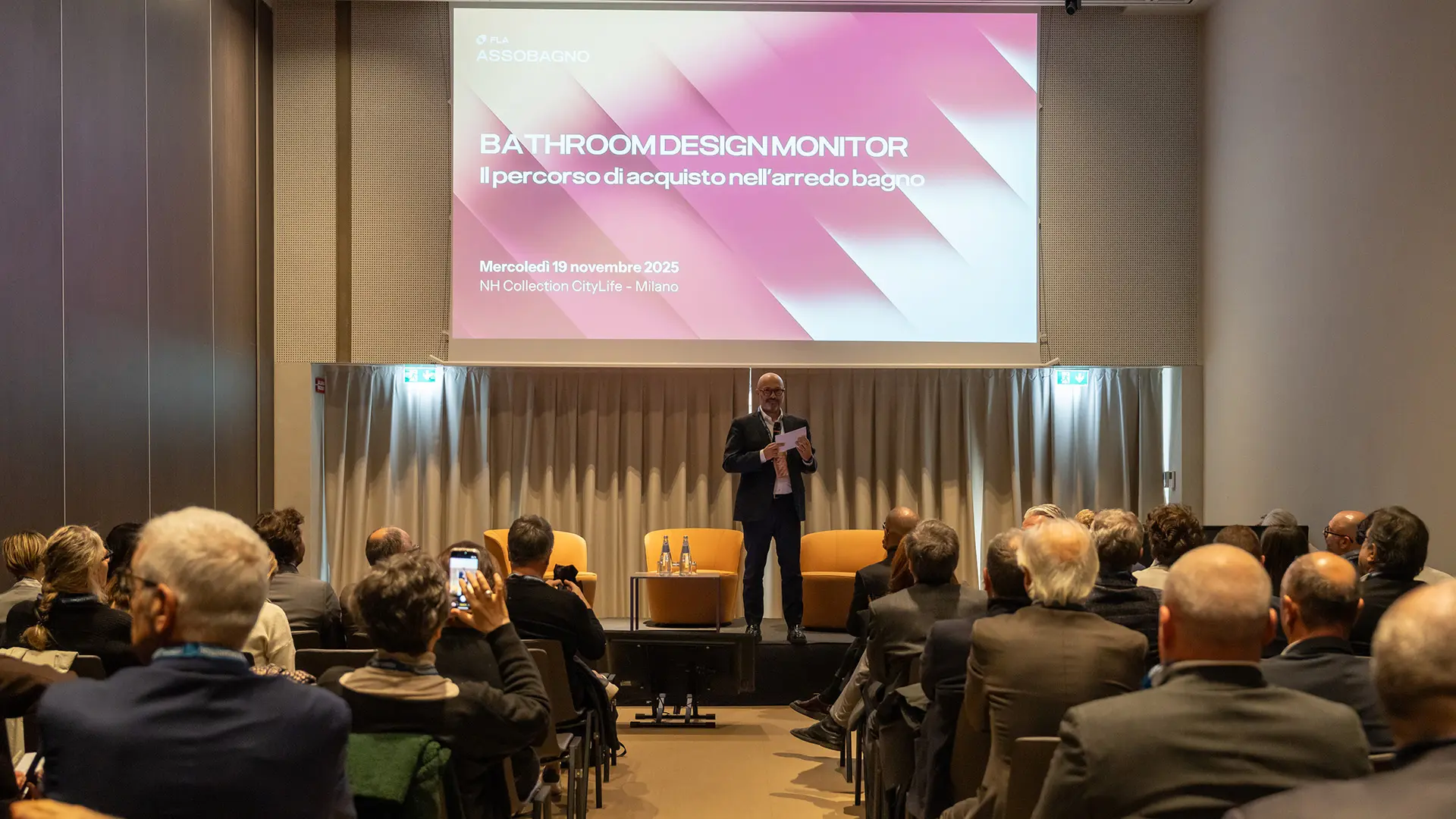They are all Italian and all in some way draw on the theme of memory. This is true even when they deal with current sporting events associated with the imminent inauguration of the Winter Olympics. There are ten of them and for the most part they are held in the most reserved cultural circuits, outside the mainstream. It’s even better when they’re out of town, bringing historic residences to life with gleams and flashes of good design
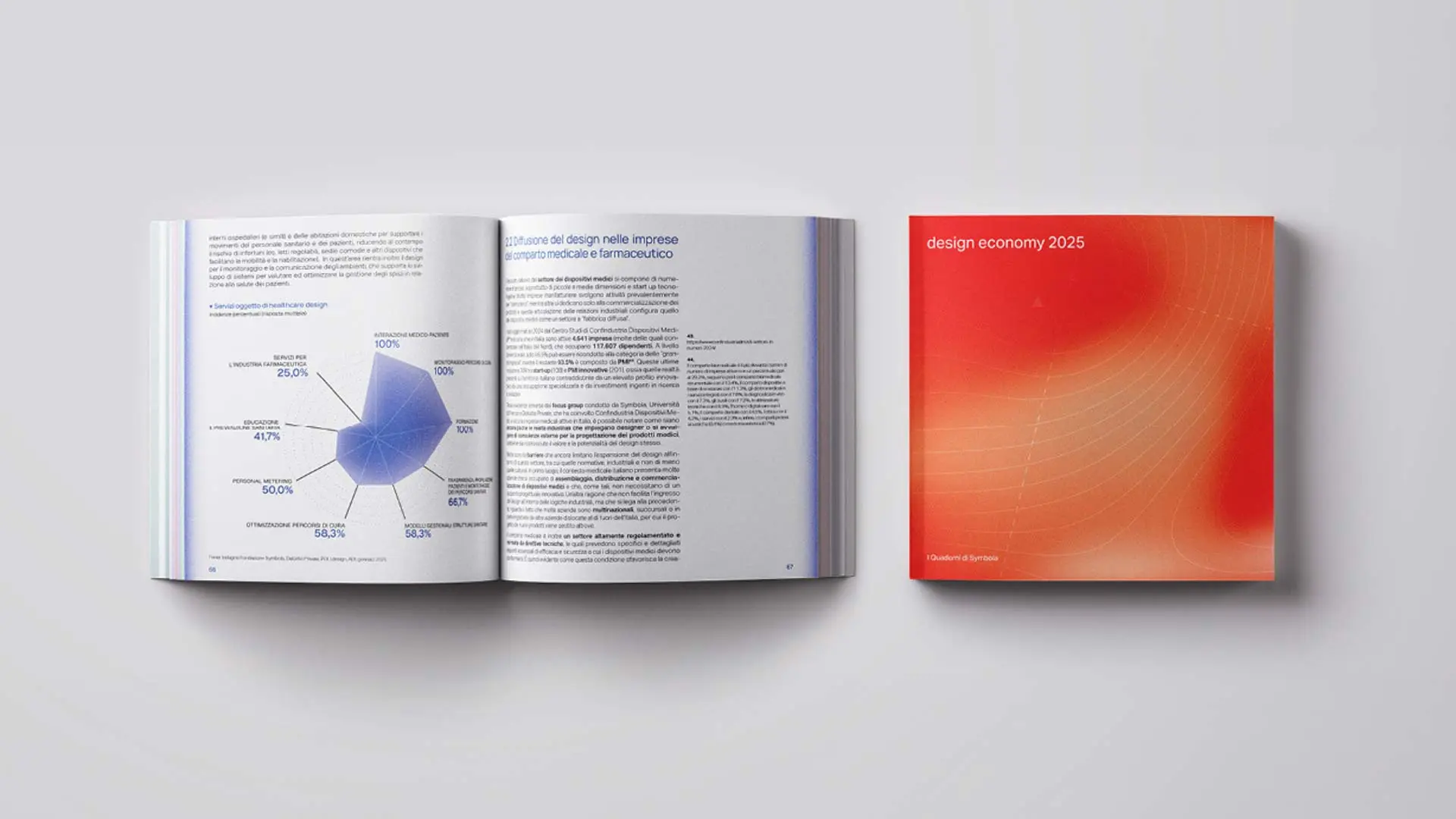
The Design Economy Report, produced by the Symbola Foundation, sets out a detailed overview of the sector, including data, performance, expertise and evolving trends
What are the most important challenges facing the design industry? And what are the resources, tools and disciplines useful for tackling the constant social, economic and environmental changes that characterise our age? It is a highly complex age, in which changes come from afar and call for long-range strategies. From the climate crisis to digital acceleration, and the new paradigms linked to demographic decline and parallel population ageing, a design approach is needed to steer Made in Italy towards more human-scale and more competitive models.
To this end, the Design Economy Report is a useful tool that has been providing an annual qualitative and quantitative overview of the sector since 2017. Promoted by the Symbola Foundation, Deloitte Private, POLI.design and ADI (Association for Industrial Design) in collaboration with Comieco, AlmaLaurea and CUID, it paints an annual picture of the design sector, providing data and in-depth analysis on performance, skills and trends, highlighting the contribution that this infrastructure makes to the competitiveness of Italy’s companies and to the country’s image in the world.
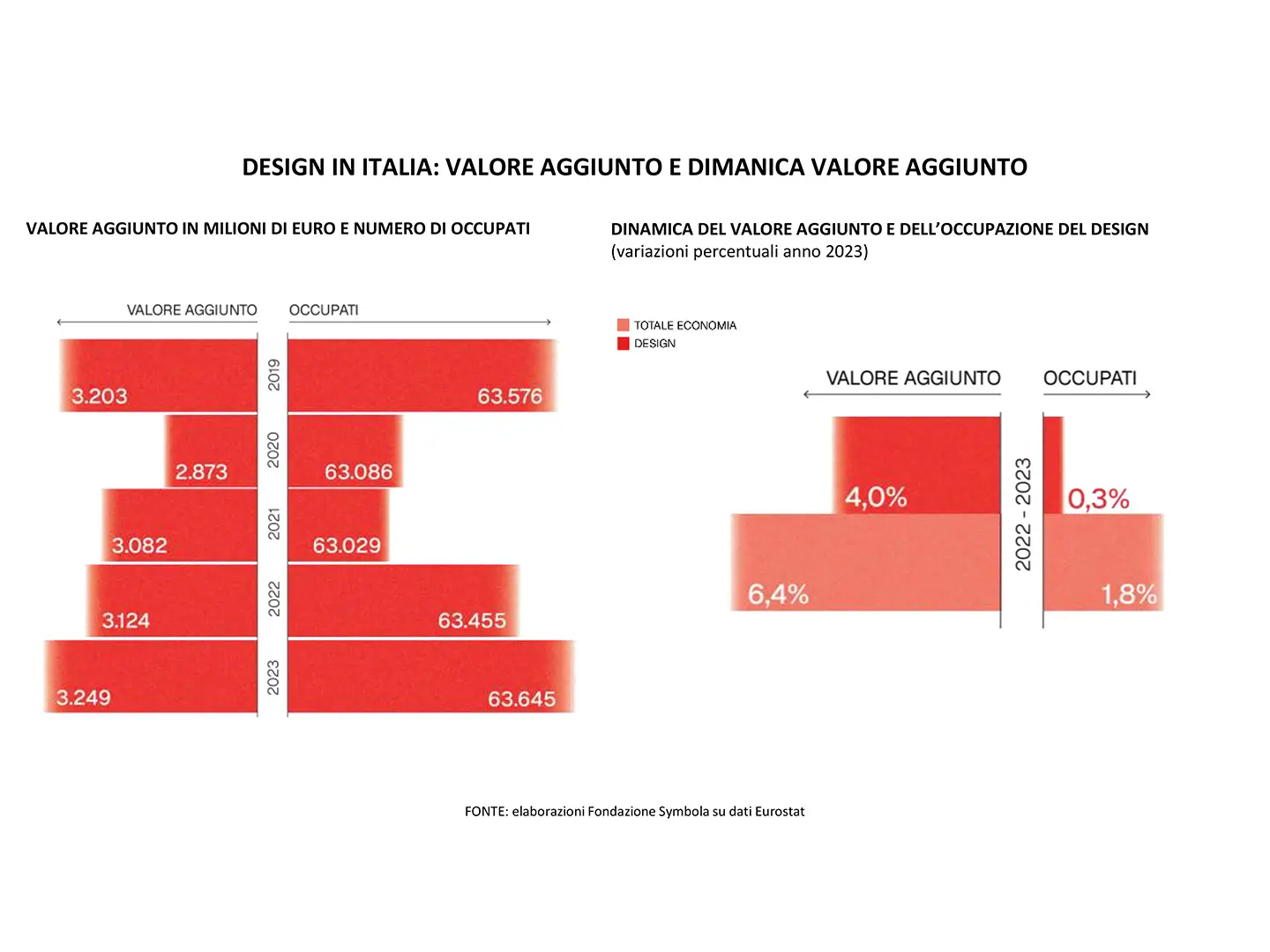
A snapshot of the sector in Italy
Italy confirmed its growth in added value over the last three years, from 2.9 to 3.2 billion euros, and in the number of employees, which reached 63,645 (up from 63,086). However, a more contained pace was observed compared to other sectors of the economy (+4.0% for added value and +0.3% for employment, while, as a whole, the Italian economy recorded +6.4% and +1.8% respectively), signalling the need for a development strategy geared to consolidating the sector's competitive positioning, in order to improve on some historic criticalities - the structure of its companies, poor capitalisation and inadequate entrepreneurial culture - to give further impetus to the Italian design system.
Milan as the capital of design
The city of Milan represents a complex ecosystem that generates value for the competitiveness of Italy’s national production and cultural system. The city is again the established capital of the sector thanks to the Salone del Mobile.Milano, which this year notched up its 63rd edition, the Compasso d'Oro and Triennale Milano. This system is able to generate just under a fifth of national added value (18.6%) with 8,354 employees (13.1% national). It is followed by Turin, Rome and Bologna; while, in terms of the contribution of design to the total regional and provincial economies, the Marche and the province of Fermo rank first in Italy, driven by demand from the manufacturing sectors.
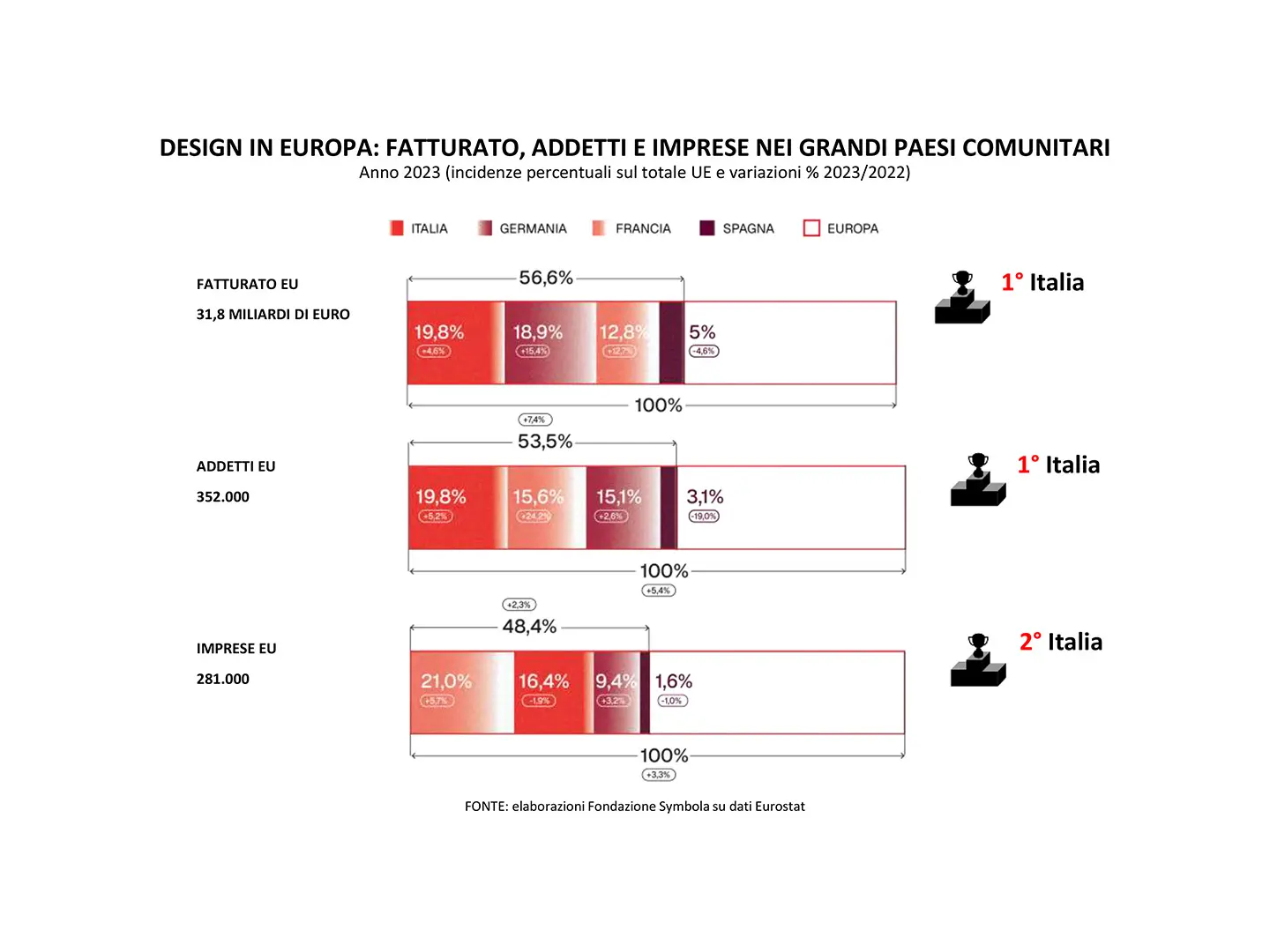
The relevance of design for European markets
Within the European economy, design is a key sector: it encompasses 281,000 companies, which generate 31.8 billion euros in turnover and employ about 352,000 people. The figures have grown (turnover +5.5%, employment +5.4%) according to the latest surveys. Italy maintains its absolute primacy in terms of turnover and employees. In fact, 19.8% of the European design industry's turnover comes from Italian companies; Germany and France follow with 18.9% and 12.8% respectively. Italy saw a slow-down (+4.6%) compared to the double-digit growth recorded in the previous year (+20%), while Germany (+15.4%) and France (+12.7%) continue to grow at a sustained rate.

The contribution of artificial intelligence
At the centre of the debate for some time now, artificial intelligence is also an issue of primary importance for the design industry. Design and innovation are deeply connected in mutual exchange. According to the Report, 80 per cent of the design practitioners interviewed use artificial intelligence tools: 35.9 per cent in a broad and transversal manner and 43 per cent limited to certain production processes. The proportion of users is considerably higher in the case of companies than of designers (88.9% versus 53.5%). The percentage of operators who do not use any AI solutions is much smaller, down to 6.8% from 21% in the last survey (the percentage of designers fell to a lesser extent: from 27% to 21.2%).
Design for health and care
This ranges from the design of ergonomic medical devices to intuitive health monitoring interfaces and the creation of hospital environments designed to reduce the stress of medical staff and patients. In recent years, the medical and pharmaceutical sectors have been seen as high-potential areas, where design meets functionality and the medical and wellness needs of patients. The Report shows that 9.4% of the design services required by the industry today come from the healthcare sector, forecast to rise to 9.7% over the next three years. These data highlight the evolution of the increasingly close link between design and the healthcare sector, in which the demand for eco-design services for healthcare stands at 4.9%. Specifically, the healthcare sector sees a great deal of potential, which has enabled the consolidation and spread of specialised figures such as healthcare designers.
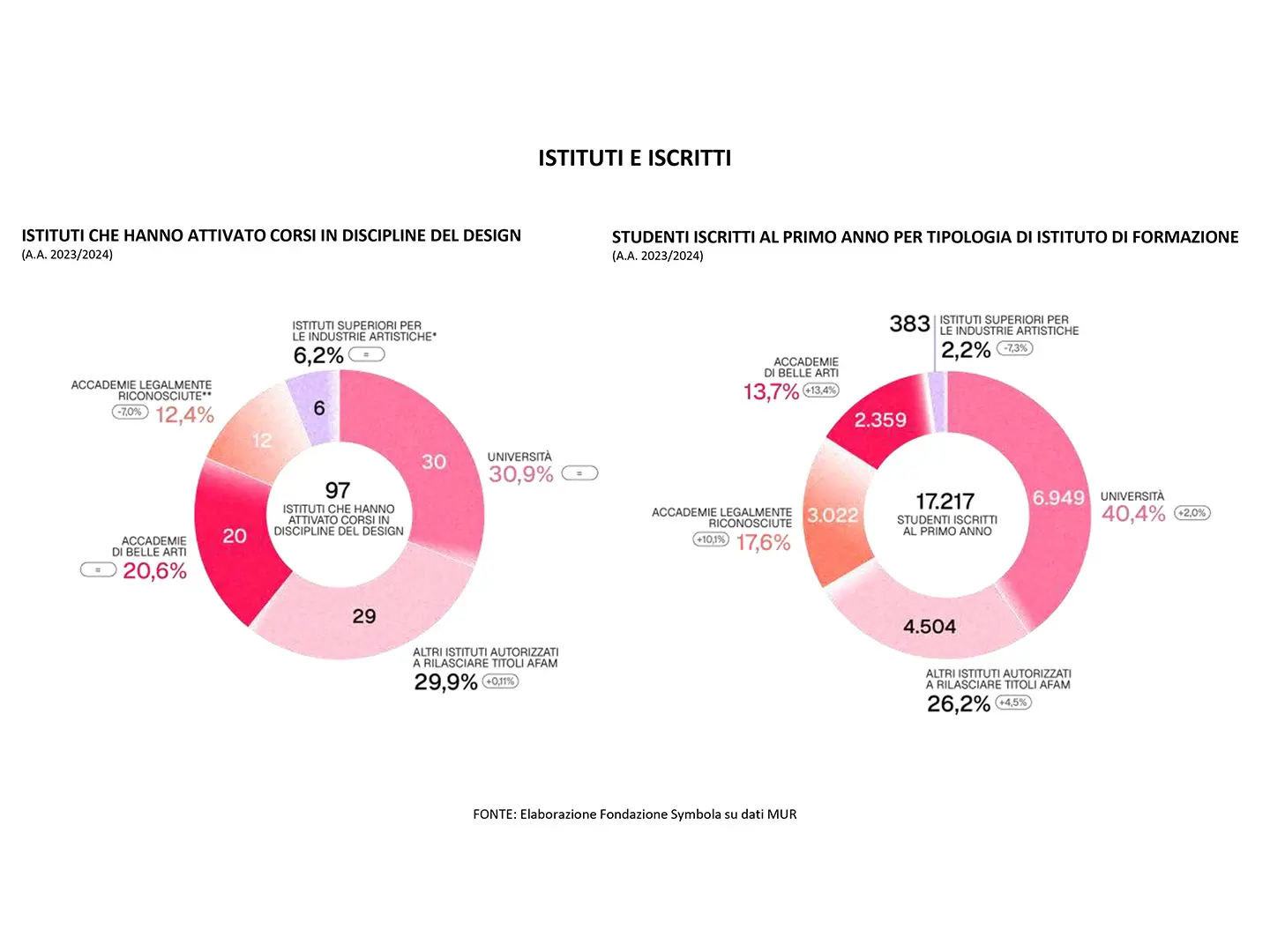
Training and employment
The range of training on offer is increasingly broad and diverse. In the 2023/2024 academic year 97 institutes launched study courses in design disciplines, 2 more than in the previous survey. These include 30 Universities (20 public and 10 private), 29 Other Institutes authorised to issue AFAM degrees, 20 Fine Art Academies, 12 Legally Recognised Academies and 6 ISIAs, for a total of 371 study courses, split into various training levels and different areas of specialisation. Compared to the previous academic year, the number of accredited and new courses grew by 9%, while the number of institutes increased by 2%, due in particular to the figure for Other Institutes authorised to award AFAM degrees. The new courses launched include, for example, those oriented towards environmental and social sustainability issues.


 Markets
Markets




